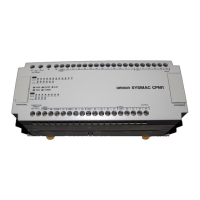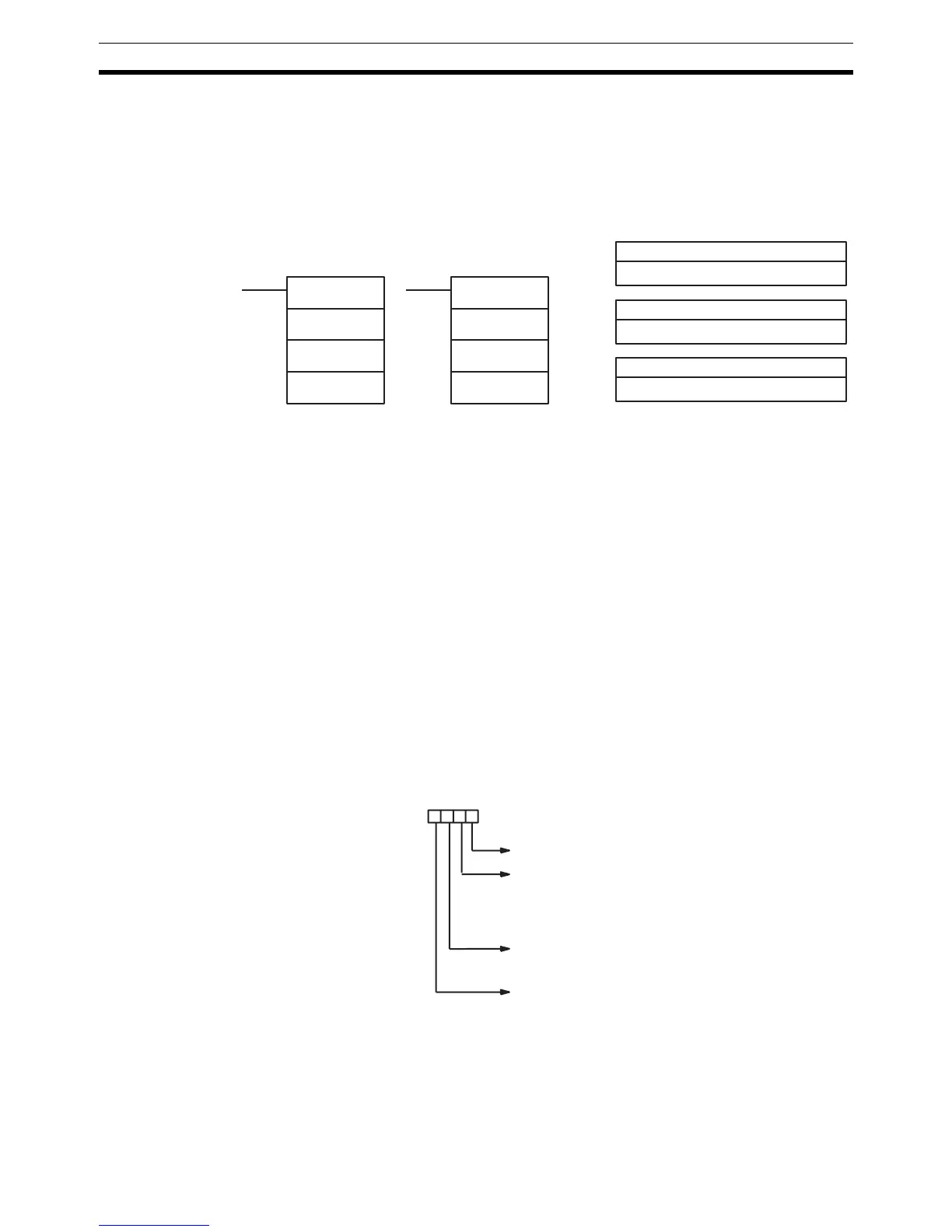268
Conversion Instructions Section 5-19
Flags ER: Incorrect digit designator, or data area for destination exceeded.
Indirectly addressed DM word is non-existent. (Content of *DM word
is not BCD, or the DM area boundary has been exceeded.)
5-19-8 ASCII CONVERT – ASC(86)
Limitations Di must be within the values given below.
All destination words must be in the same data area.
DM 6144 to DM 6655 cannot be used for D.
Description When the execution condition is OFF, ASC(86) is not executed. When the exe-
cution condition is ON, ASC(86) converts the designated digit(s) of S into the
equivalent 8-bit ASCII code and places it into the destination word(s) begin-
ning with D.
Any or all of the digits in S may be converted in order from the designated first
digit. The first digit, the number of digits to be converted, and the half of D to
receive the first ASCII code (rightmost or leftmost 8 bits) are designated in Di.
If multiple digits are designated, they will be placed in order starting from the
designated half of D, each requiring two digits. If more digits are designated
than remain in S (counting from the designated first digit), further digits will be
used starting back at the beginning of S.
Note Refer to Appendix H for a table of ASCII characters.
Digit Designator The digits of Di are set as shown below.
S: Source word
IR, SR, AR, DM, HR, TC, LR
Di: Digit designator
IR, SR, AR, DM, HR, TC, LR, #
Ladder Symbols
Operand Data Areas
D: First destination word
IR, SR, AR, DM, HR, LR
ASC(86)
S
Di
D
@ASC(86)
S
Di
D
Specifies the first digit to be converted (0 to 3).
Number of digits to be converted (0 to 3)
0: 1 digit
1: 2 digits
2: 3 digits
3: 4 digits
First half of D to be used.
0: Rightmost 8 bits (1st half)
1: Leftmost 8 bits (2nd half)
Parity 0: none
1: even
2: odd
Digit number: 3 2 1 0

